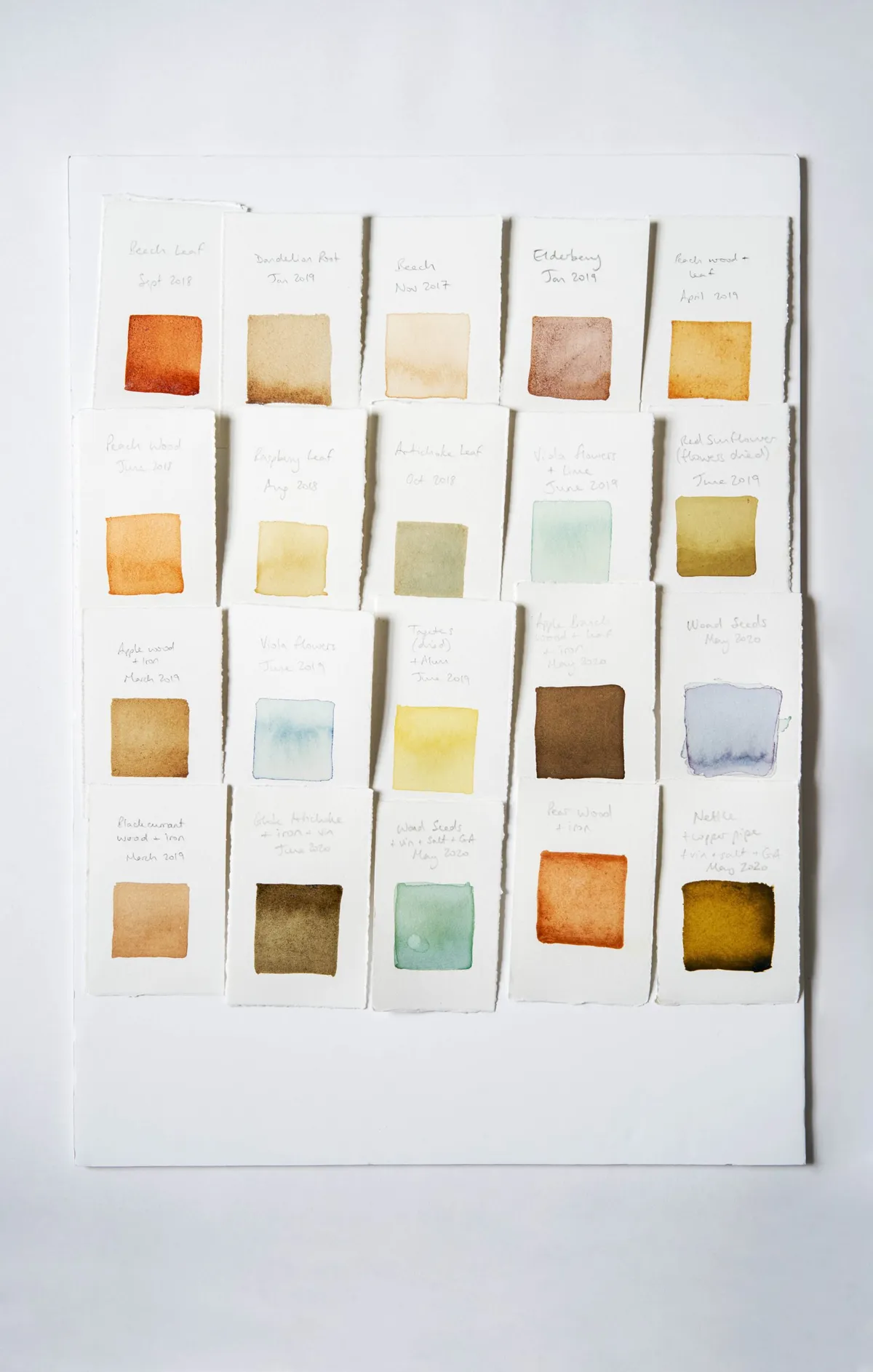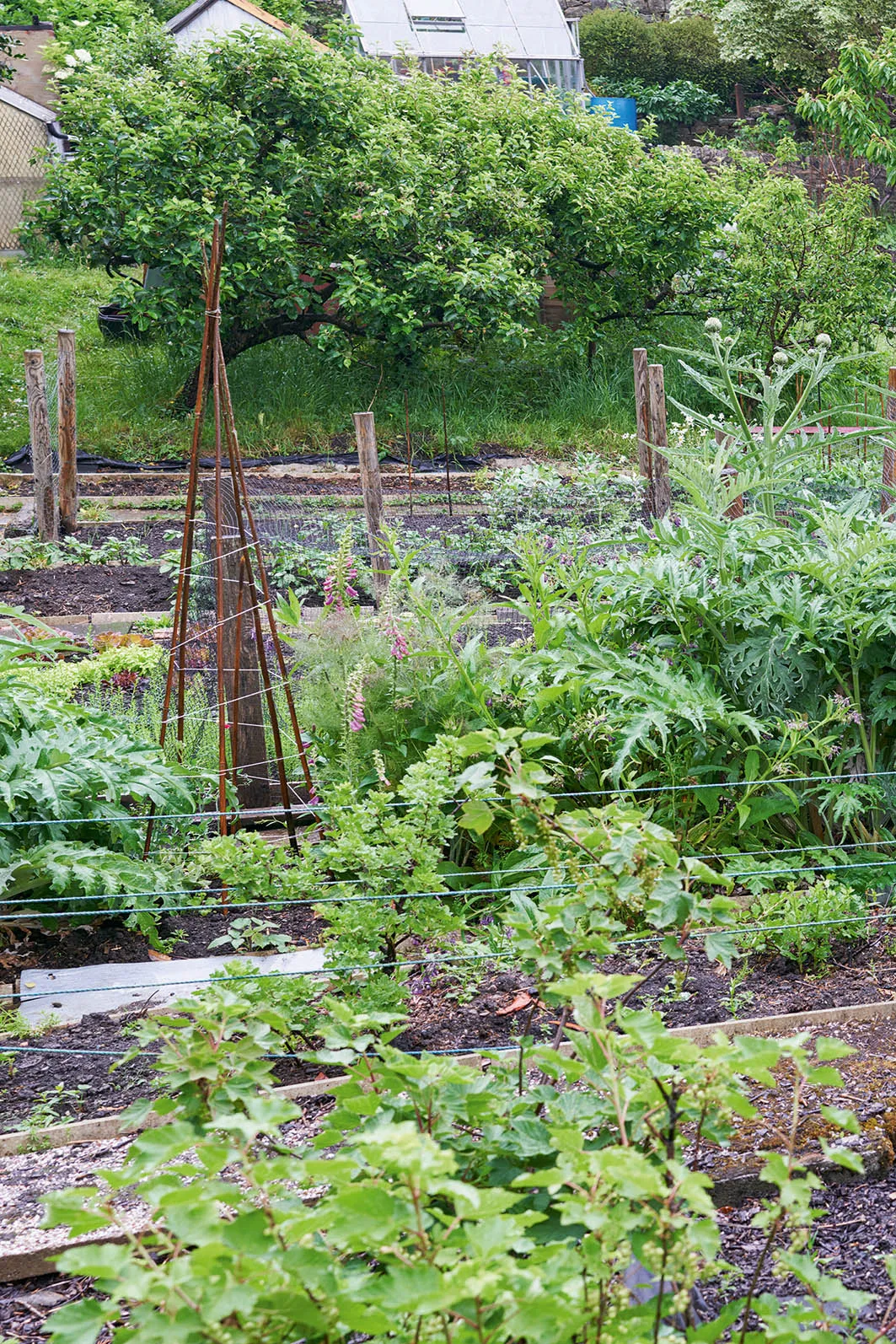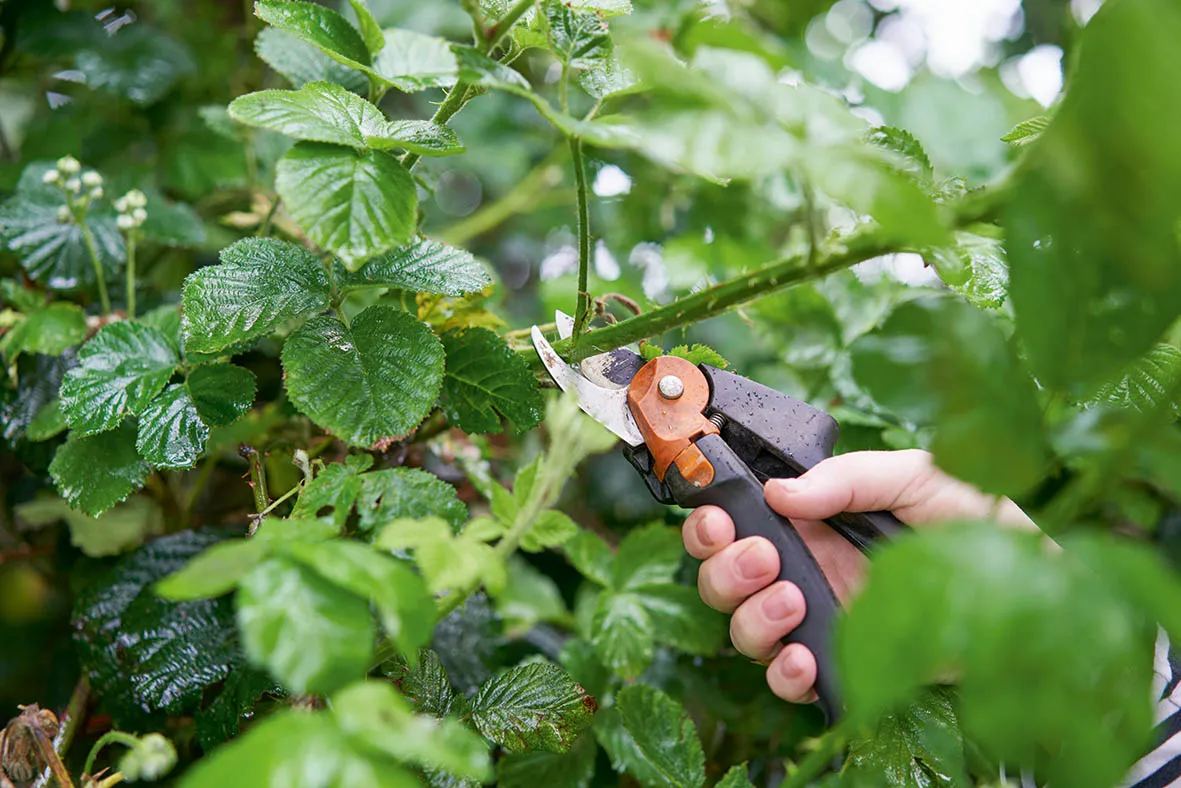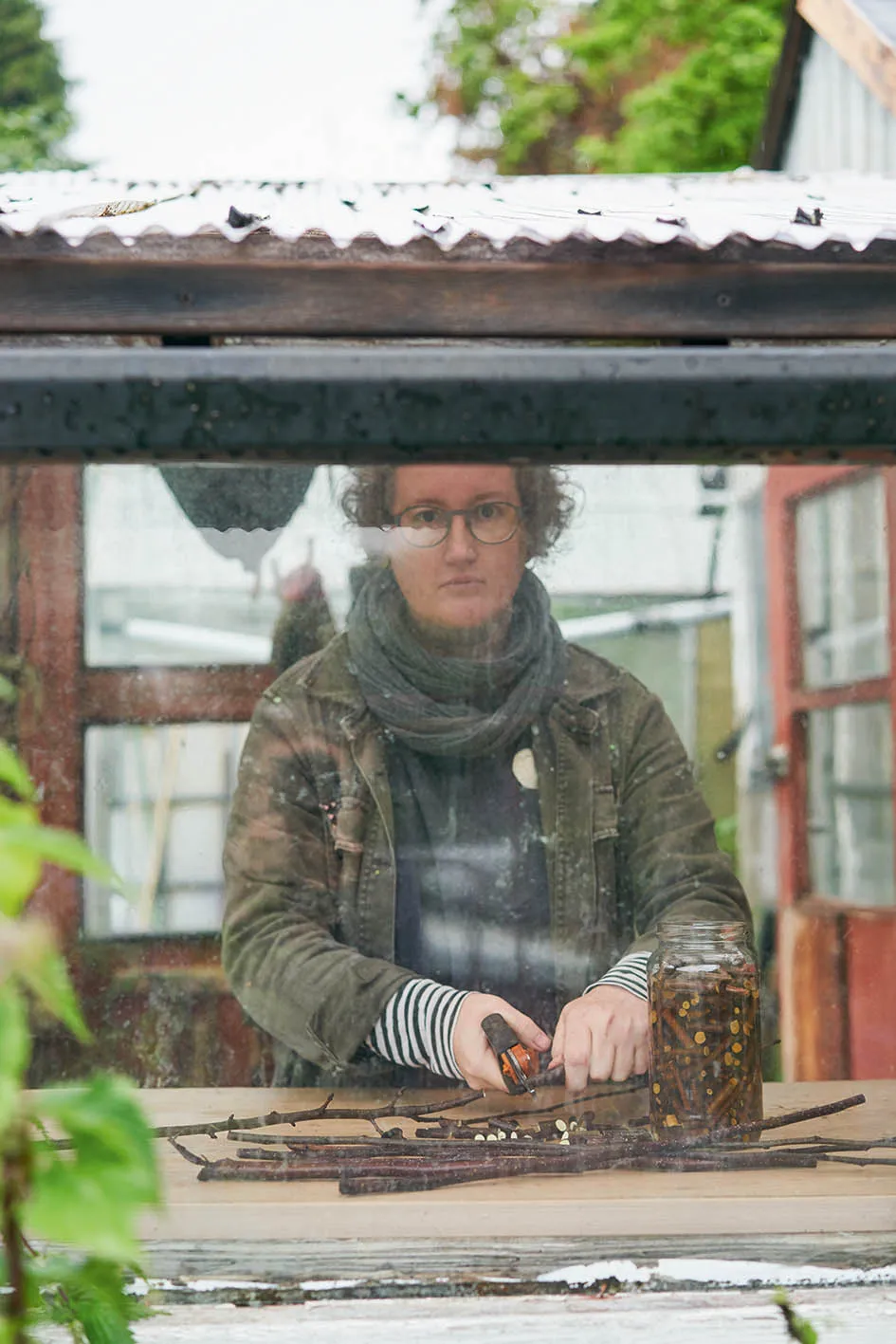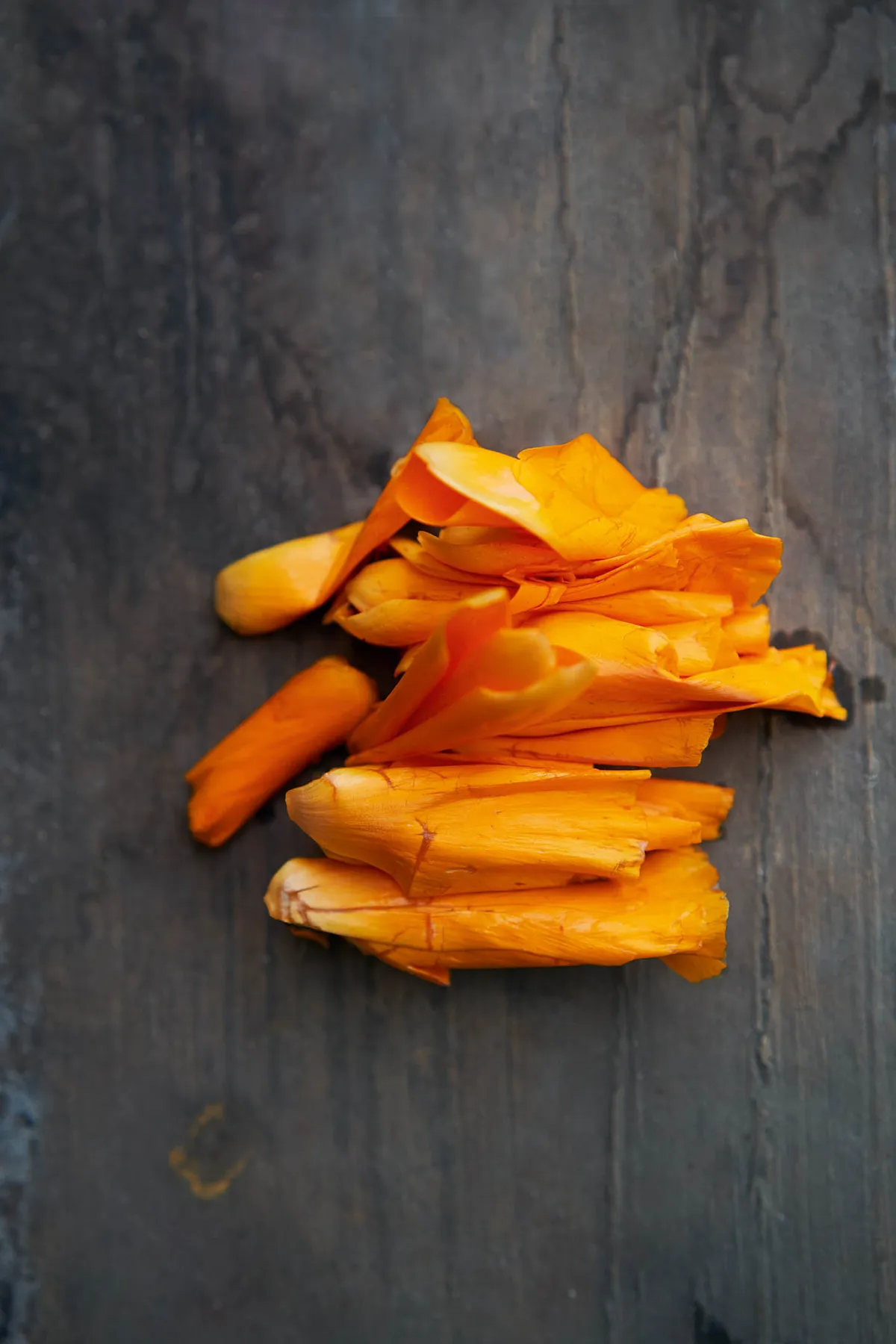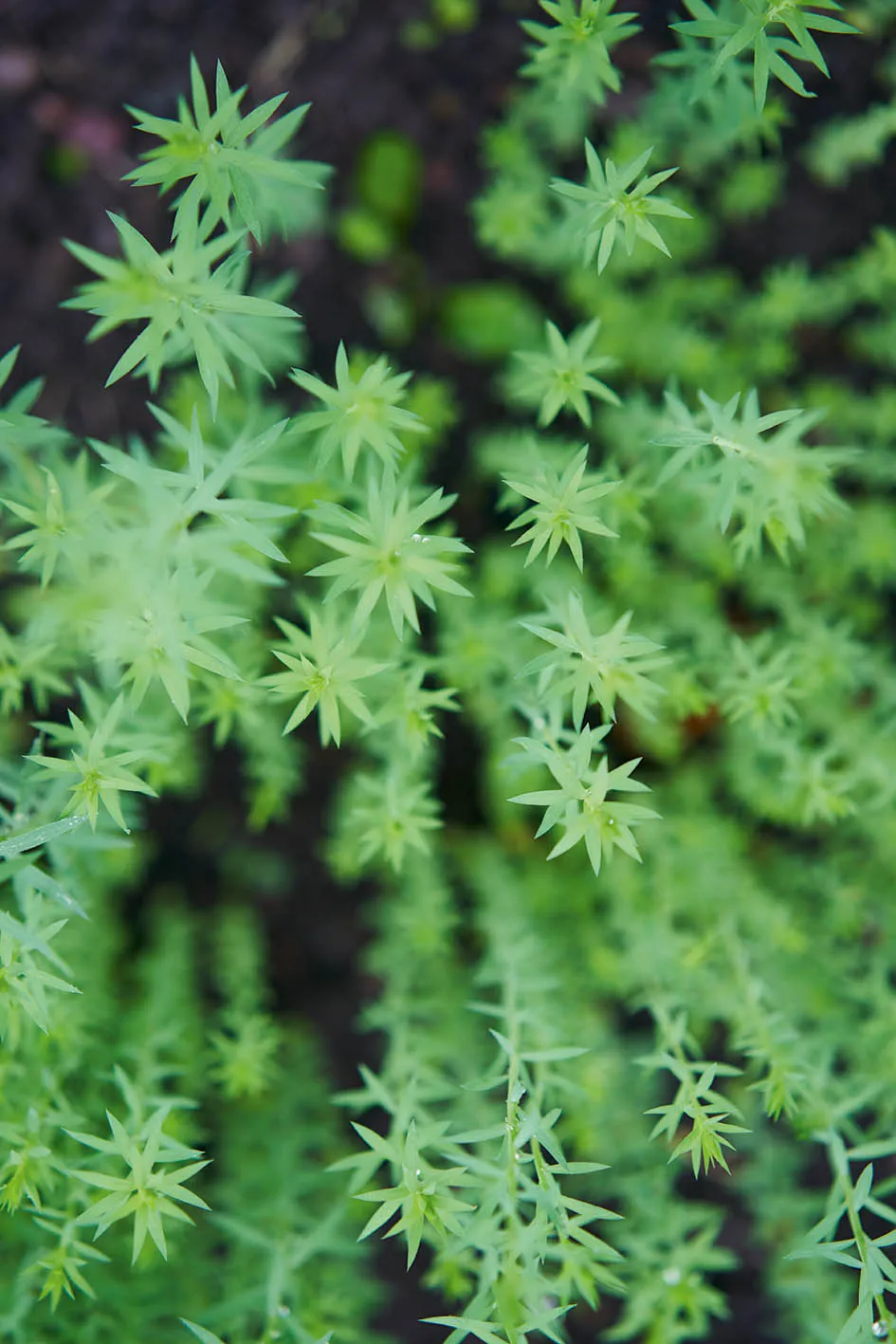West Yorkshire-based artist Alice Fox makes objects that are endlessly tactile: a satisfyingly shaped stone dug from a vegetable bed fits snugly into a glossy, hat-like vessel made of braided dandelion stems; a damaged leaf found on a walk in her local woods is ‘darned’, the hole mended with meticulous cotton stitching; broken nut shells are patched with tiny, naturally dyed woven squares of thread; palm-sized baskets are crafted from hairy rush fibres or arid paper yarn; even blue plastic twine found on a beach is woven into delicate, gall-like structures. Each piece is inviting to the touch – like pottery they demand to be handled, turned over, examined at close quarters. Alice draws her inspiration from the landscape and from a deep feeling for sustainability.
She spent her childhood holidays on the west coast of Scotland, exploring and coming to love the natural world in all its guises. This affinity led her to study physical geography at university, then to work surveying otters in Yorkshire. However, after the birth of her second child she changed course, withdrawing from the natural sciences as she immersed herself in making and art.
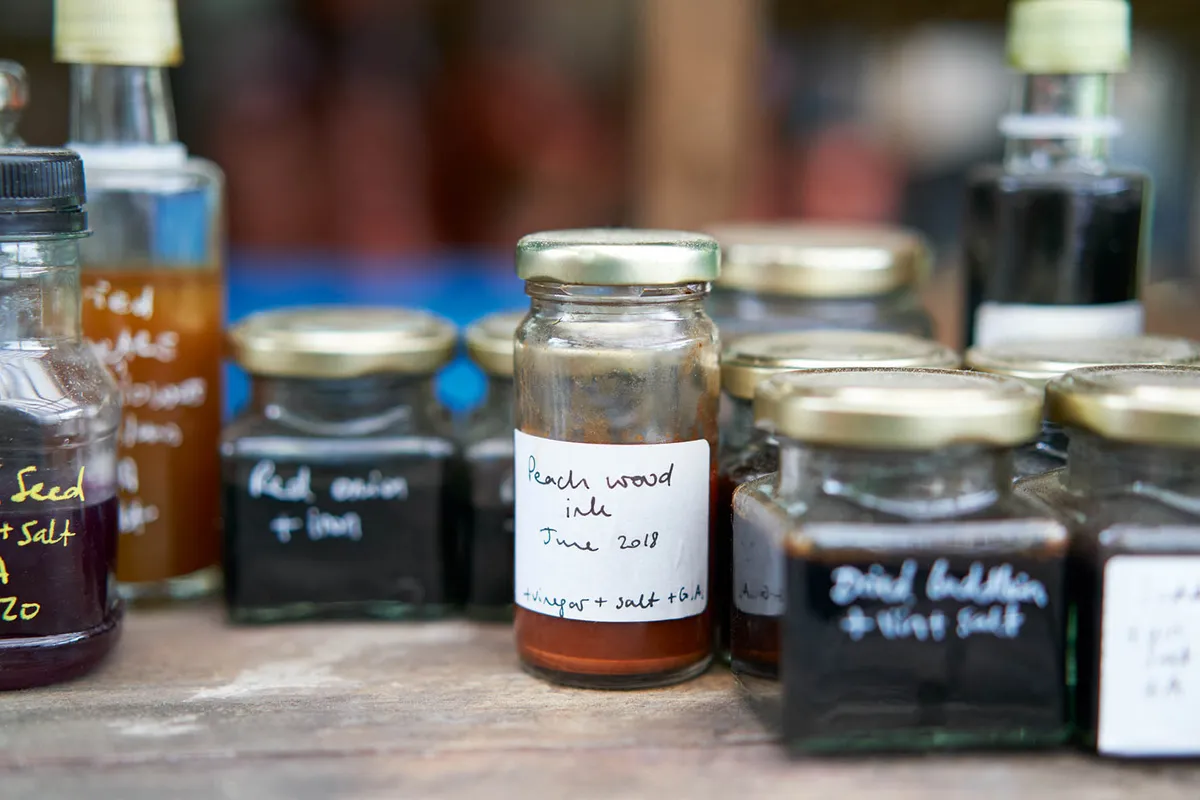
Plant inks made from woad seed, tagetes flowers, red onion, peach wood and dried buddleja flowers. Those made from petals are kept out of direct sunlight as they are less stable over time.
Alice completed a second degree in textiles, but her connection with nature persisted and, as she began working as an artist, she made a conscious decision to be as self-sufficient as possible. She garners her materials wherever she can and ‘found’ objects often spark an idea: discarded paper found in a shed full of clutter on her allotment is transformed into yarn, a creamily pale limpet shell spied on a beach is stitched with silk and cotton; a rusty washer discarded on the pavement prompts a series of prints. The material objects that Alice discerns in the natural world act as a tangible link to a specific time and place. They prompt a process of ‘imaginative exploration’ and technical experimentation that allows her creative response to blossom.
Nearly three years ago Alice took on her allotment, Plot 105, as the focus for her MA in Creative Practice. Here her ability to create her own materials flourished. Among common fruit and vegetable crops, she grows flax from seed – harvesting, rippling, retting, scutching and combing before eventually spinning the fibres into thread. Through investigation and manipulation she learns about the properties of her medium, tests boundaries and capabilities, then records her findings. Leaves from a failed garlic crop, dandelion stems and daffodil foliage are twined into supple rope. Weedings and prunings are used to make botanical contact prints, where plants are folded into an envelope of paper, clamped and steamed to leave an impression, sometimes fleeting, on the paper.
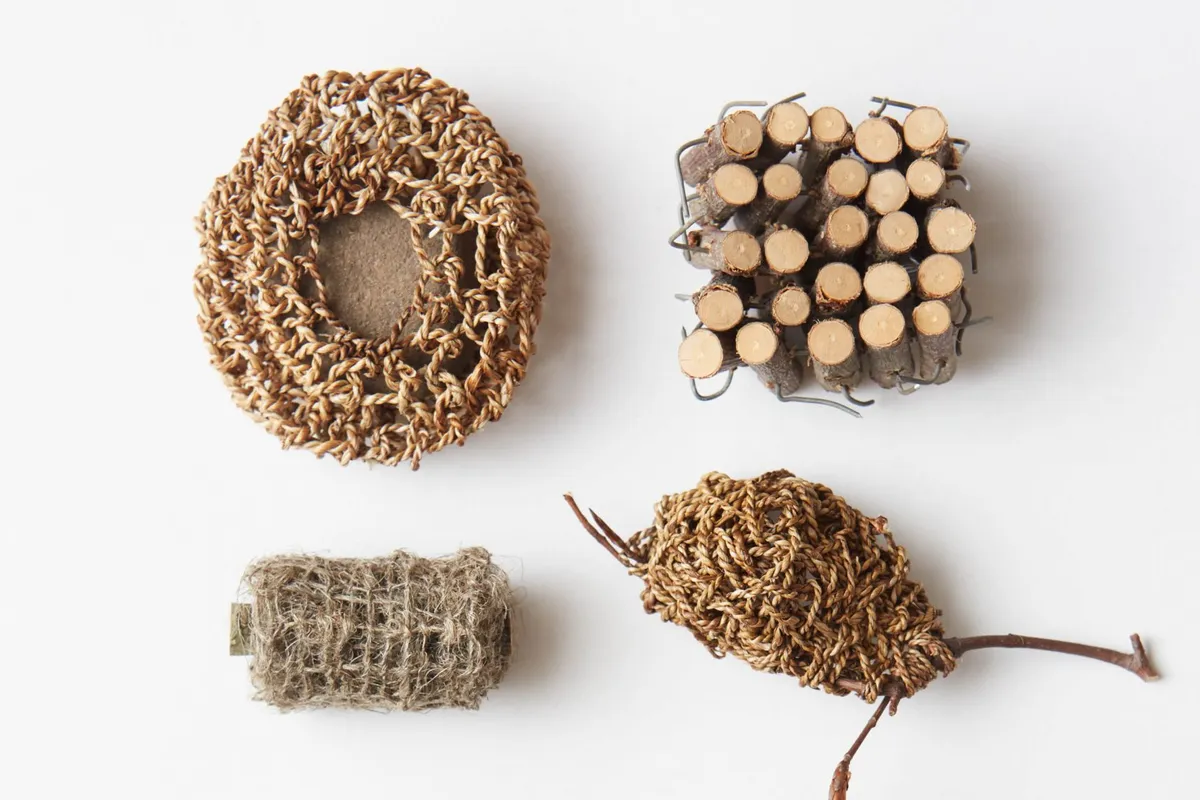
Above: A selection of Alice’s works made from, variously: daffodil leaves, apple wood, found wire, knotted flax, bramble stem and sweetcorn husk, all spun or corded into tactile rope, then woven into organic forms.
She made these prints every week for a year and kept a record in 52 hand-bound notebooks. Fragments of paper, plastic, wood, ceramic and metal found on the allotment are re-imagined as new ‘constructed forms’. Anything at all organic is used for ink-making. Nothing goes to waste. Her experiments with plant inks led to a mapping of the plants on her allotment in a clear grid of colour-washed squares, each ink made from a different plant on the plot and mapped to the plant’s location. The colours are soft, subtle and alluring, drawing you in, leaving one intrigued about the plant that produced such beauty.
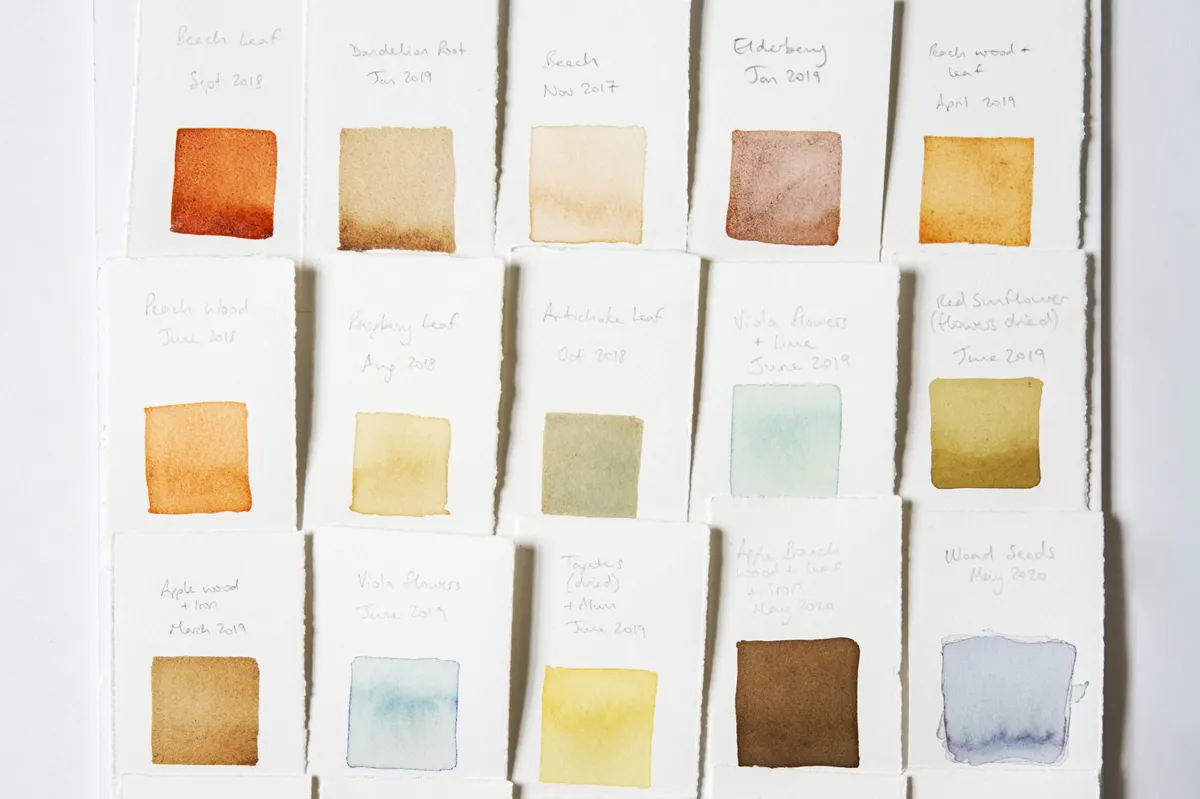
Above: Test cards for Alice’s ink. Made from cultivated and gathered plants, the inks record the year in an infinite variety of subtle, organic colour washes
When the time comes for Alice to leave her plot, she takes an apple branch too. At home she breaks the wood into pieces and sets it to simmer in a pot of water on the stove. She is extracting the tannins to make more ink. The method dates from medieval times when tannin-rich oak galls were ground to a powder and steeped in water, after which gum arabic and copperas (iron sulphate) were added for permanence and richness of colour. Alice will simmer the pieces for several hours, reducing the liquid to intensify the tincture. The process encapsulates Alice’s art: she creates tangible work from something that others would dismiss and in so doing she – quite literally in this case – distils the essence of her materials. The next day she returns to her allotment with the apple-wood ink ready to be put to use in her next creation. And so her cycle of considered organic making begins again.
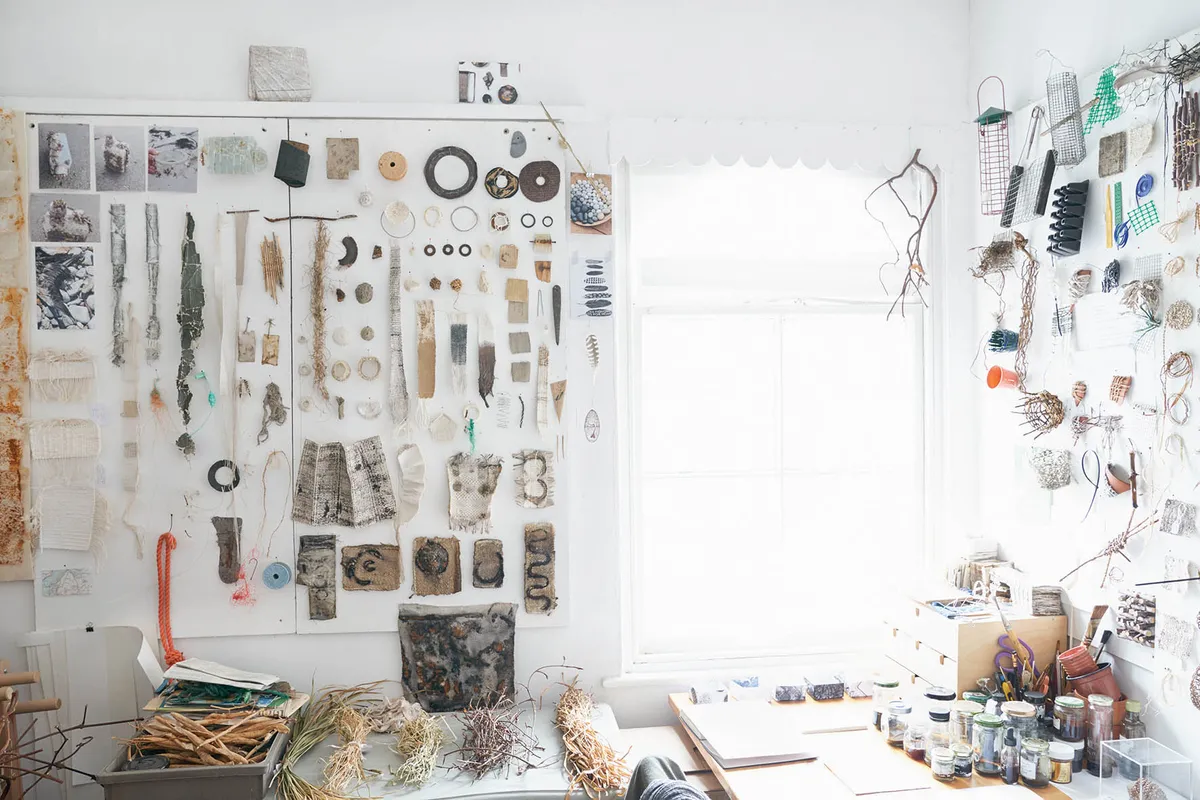
Alice’s studio wall, where she pins a collection of samples and experiments.

Eschscholzia petals waiting to be put to use in botanical contact printing
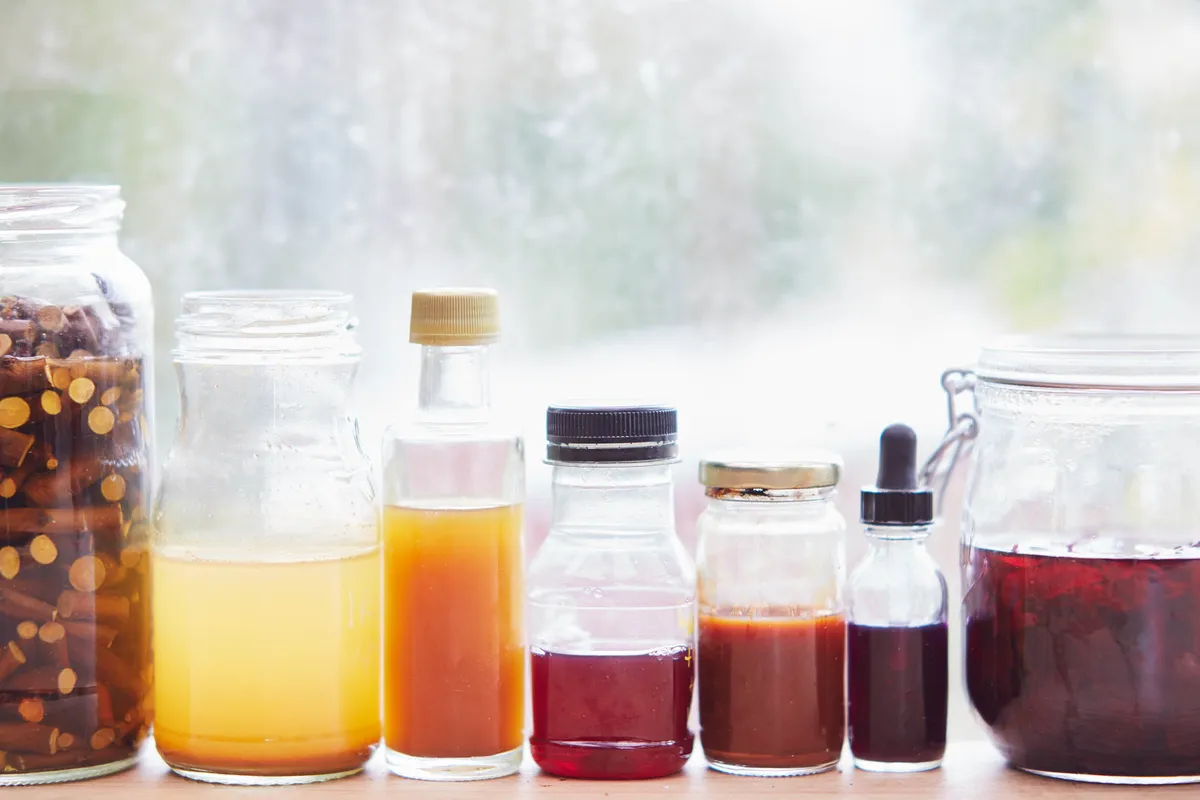
Plant inks in the making or waiting to be used in her allotment shed, including apple wood prunings
Find out more about Alice’s work at alicefox.co.uk

